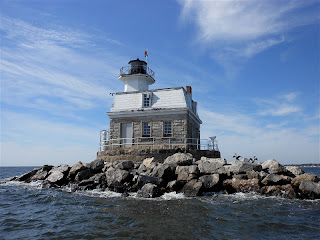Green is on the GO in
Fairfield and the Region
By Mike Lauterborn
(for Fairfield Magazine “From the Field” column)
10/25/11
The Green Revolution – that is, the worldwide environmental movement that seeks to adopt cleaner, greener, renewable and sustainable practices – is no longer in its infancy. This little tyke has climbed out of its crib, helped itself up, toddled about and learned the ABCs of the channels and legislative arenas with which it must deal on an ongoing basis to push through positive eco-compatible developments.
In the beginning, there was conservation, wildlife protection and ecology. Then alternate energy innovations in the solar, wind and hydroelectric power categories. The intro of reduction, recycling and reuse strategies followed. Lately, it’s the buzz about sustainable gardens and local farming that’s bending an ear.
A number of businesses from Fairfield and neighboring communities are leading the charge and schooling consumers about some very unique new products and services, helping foster a big rethink about our environmental responsibilities. Several of these local players were on hand at a recent Green Market Exposition held in the City Hall Annex in Bridgeport.
There was Fairfielder Dan Delventhal’s MowGreen.US, a network of locally owned gas-free lawn care cooperatives that has taken root in Fairfield County and is rolling out regionally. Operating under the motto “Get the gas off the grass”, operators employ only traditional hand-mowers, rakes, brooms and battery-powered edgers and blowers to service lawns. For large properties, Delventhal has converted a gas mower to solar-powered hydrogen operation. At the same time, the business promotes lawn reduction in favor of native plants and organic gardens.
Fairfield-based Green Building America is a contractor that chooses to build with insulated concrete forms comprised of recycled materials like Styrofoam. A typical wall construction is made by stacking 10-foot-long blocks in a stacking system. The benefits include smart reuse of recycled materials, energy savings of 20%+, fire resistance, anti-mold and superior sound and heat insulation. “Insulation is a top earn-back in a home, and this product capitalizes on that,” said Managing Director Ed Santandrea.
Sunlight Solar Energy, which has its CT headquarters in Milford, installs solar electric and solar thermal panels on residential and commercial properties. While this is an established technology, it’s the purchase incentives and pricing that’s rapidly changing and heating up this category. This includes combined Fed and state rebates of up to 40% on cost and equipment price drops of 20%.
Brookfield, CT-based Green Star Energy installs equipment designed to make homes more energy efficient with new technologies like a split ductless invertor for heating and cooling that mounts on the wall. Oxford-based EasyCare Energy Solutions makes a reflective radiant barrier for attics to reduce energy costs.
Even local mom-and-poppers are making a difference. Gumdrop Swap is a Bridgeport company that takes unwanted kids clothing items, repurposes them and provides shopping credits to service users to redeem in its showroom. Black Rocker Gussie Bradford makes items from coconut shells, such as night lights, drinking cups, candles and jewelry containers. “Coconuts are organic and incredibly diverse,” said Bradford. “You can even burn its shell to coal and use it as a filter to purify water.”




